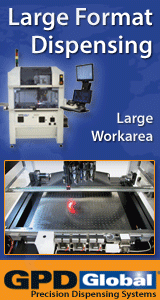Printed Circuit Board Assembly & PCB Design Forum
SMT electronics assembly manufacturing forum.
- SMTnet
- »
- Electronics Forum
- »
- omit stencil apertures to hand solder or paste, reflow then solder.
omit stencil apertures to hand solder or paste, reflow then solder.
Views: 2932
![]() I am currently weighing up my options for resistors that wil...
- Feb 25, 2020
by
Hexton
I am currently weighing up my options for resistors that wil...
- Feb 25, 2020
by
Hexton
![]()
![]()
![]() The reason the resistors are fitted at a later stage is to c...
- Feb 25, 2020
by
Hexton
The reason the resistors are fitted at a later stage is to c...
- Feb 25, 2020
by
Hexton
![]()
![]()
![]() If you get the stencil made with all apertures included then...
- Feb 25, 2020
by
RichC
If you get the stencil made with all apertures included then...
- Feb 25, 2020
by
RichC
![]()
![]()
![]() I think I'd opt for a stencil with everything already cut an...
- Feb 25, 2020
by
Steve Thomas
I think I'd opt for a stencil with everything already cut an...
- Feb 25, 2020
by
Steve Thomas
![]()
![]()
![]() Are you running a no clean process, or are you washing your...
- Feb 25, 2020
by
DWL
Are you running a no clean process, or are you washing your...
- Feb 25, 2020
by
DWL
![]()
![]()
![]() Flat surface is the number one choice for fresh part solderi...
- Feb 25, 2020
by
Evtimov
Flat surface is the number one choice for fresh part solderi...
- Feb 25, 2020
by
Evtimov
![]()
![]()
![]() "One caveat with ENIG is sometimes washing with hot DI ...
- Feb 26, 2020
by
dontfeedphils
"One caveat with ENIG is sometimes washing with hot DI ...
- Feb 26, 2020
by
dontfeedphils
![]()
![]()
![]() I'd agree with getting a stencil fully cut, and taping the p...
- Feb 26, 2020
by
robgd3
I'd agree with getting a stencil fully cut, and taping the p...
- Feb 26, 2020
by
robgd3
![]()
![]()
![]() I want to avoid peoples preferences as they will differ and ...
- Feb 27, 2020
by
Hexton
I want to avoid peoples preferences as they will differ and ...
- Feb 27, 2020
by
Hexton
![]()
![]()
![]() @Phil, not sure if this link will work, if not try googling ...
- Feb 27, 2020
by
DWL
@Phil, not sure if this link will work, if not try googling ...
- Feb 27, 2020
by
DWL
![]()
![]()
![]() Thanks for the info. In a past life I ran everything WS and...
- Mar 03, 2020
by
dontfeedphils
Thanks for the info. In a past life I ran everything WS and...
- Mar 03, 2020
by
dontfeedphils
![]()
- SMTnet
- »
- Electronics Forum
- »
- omit stencil apertures to hand solder or paste, reflow then solder.







